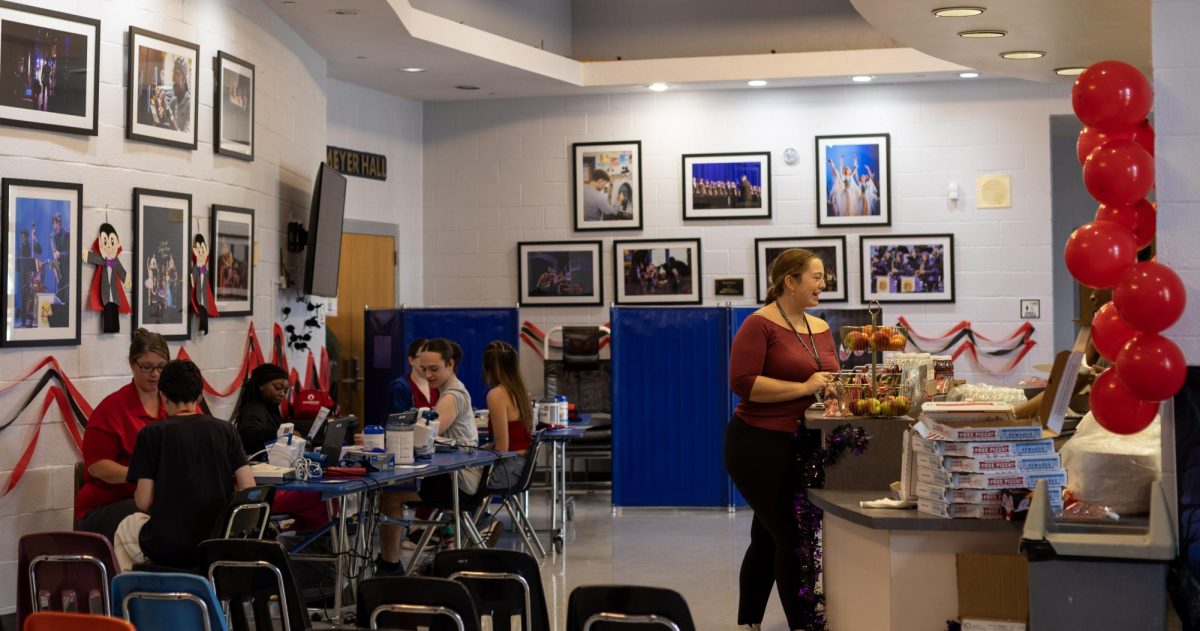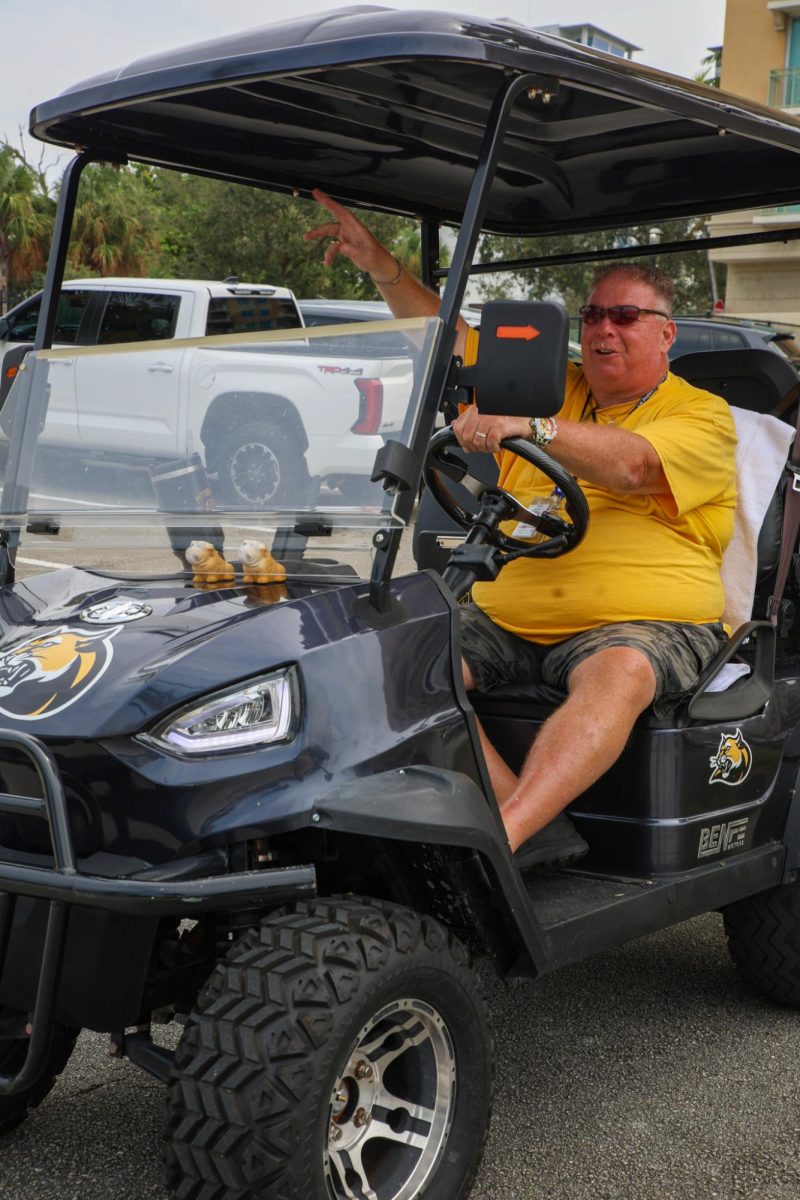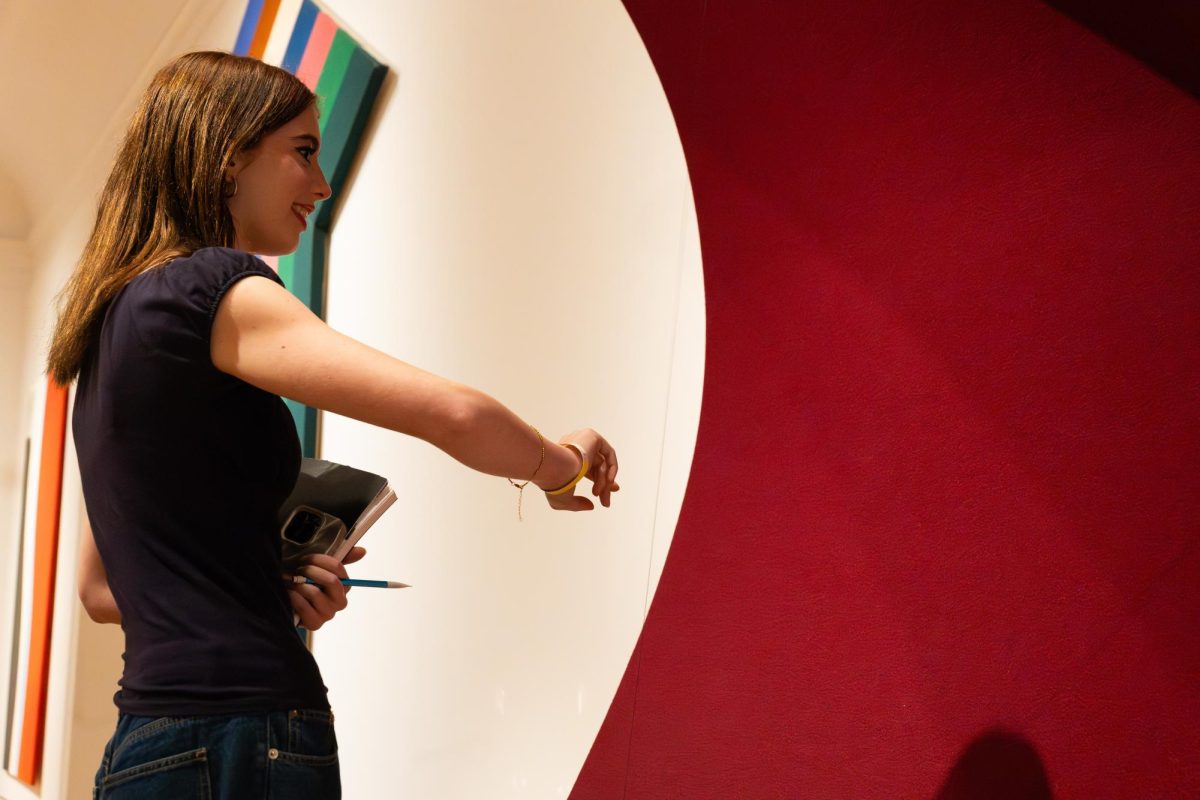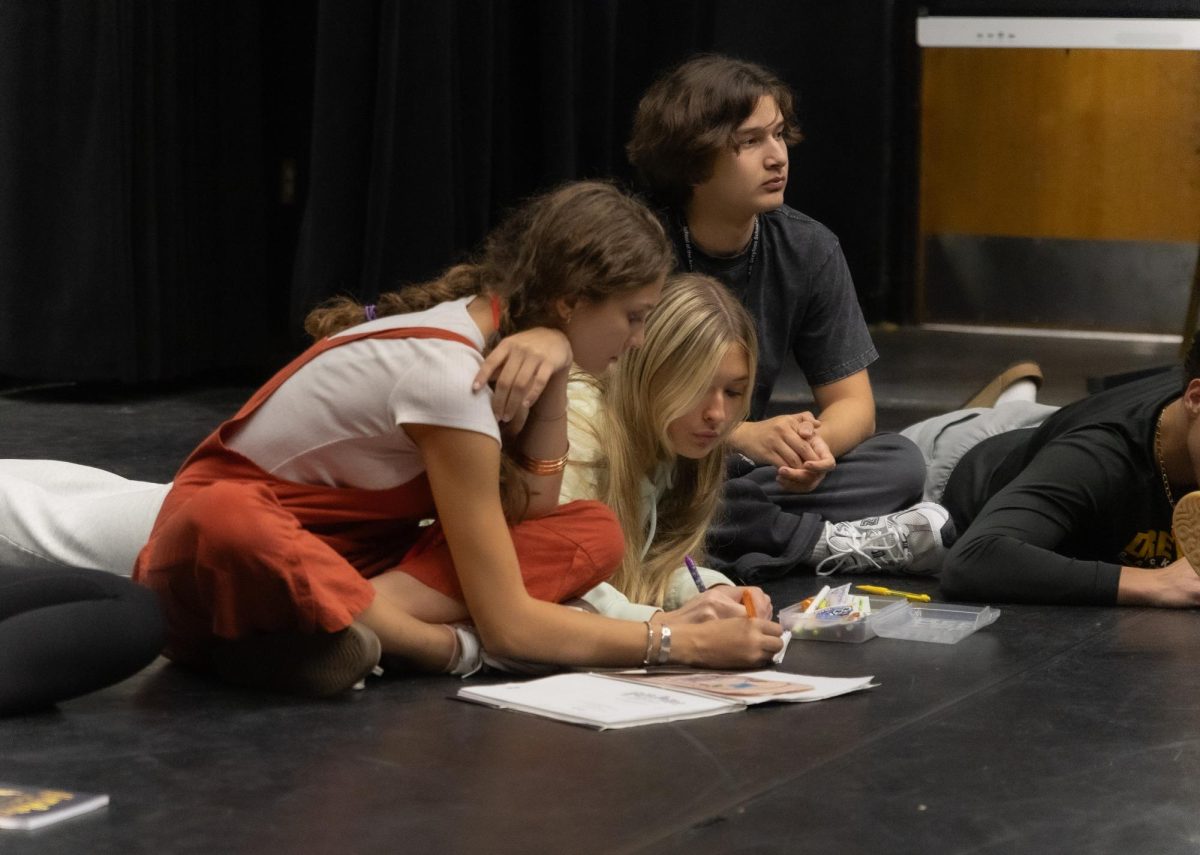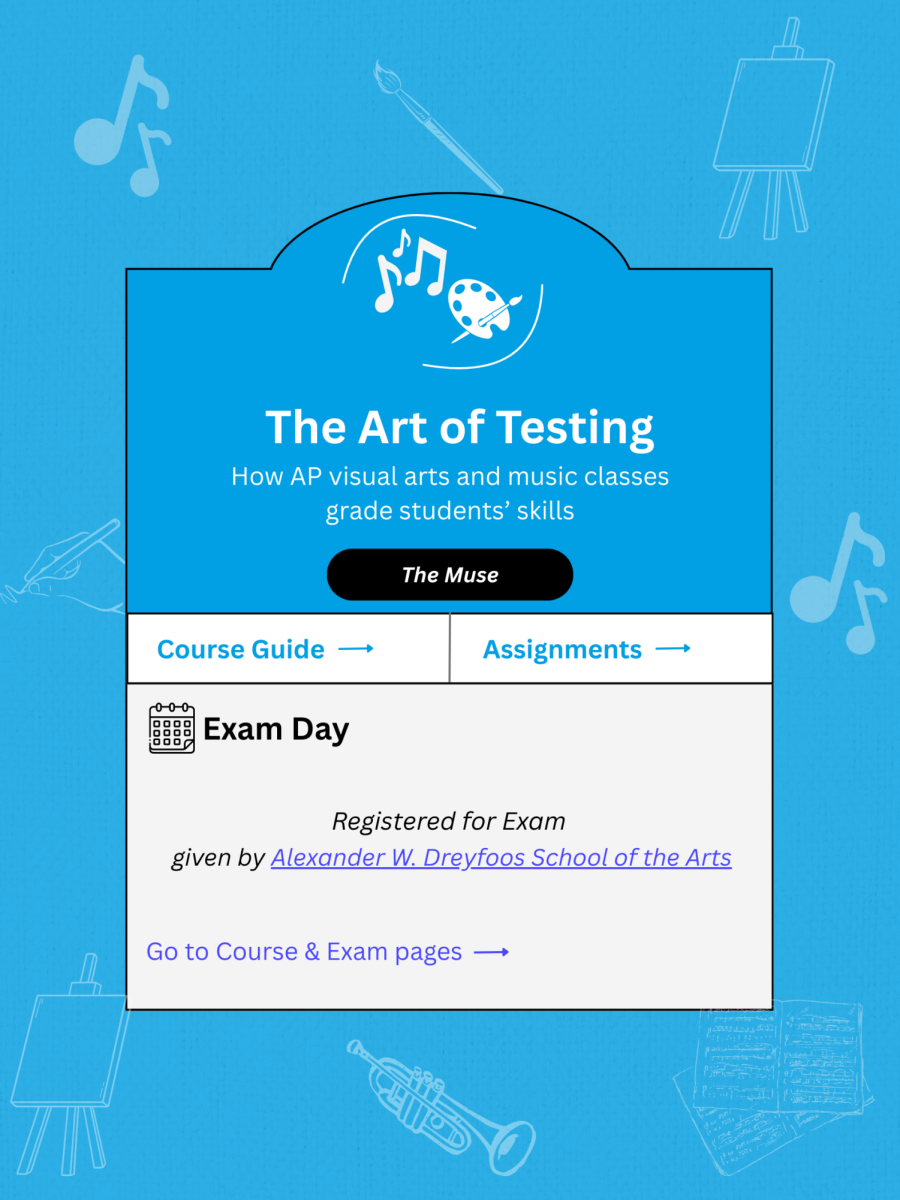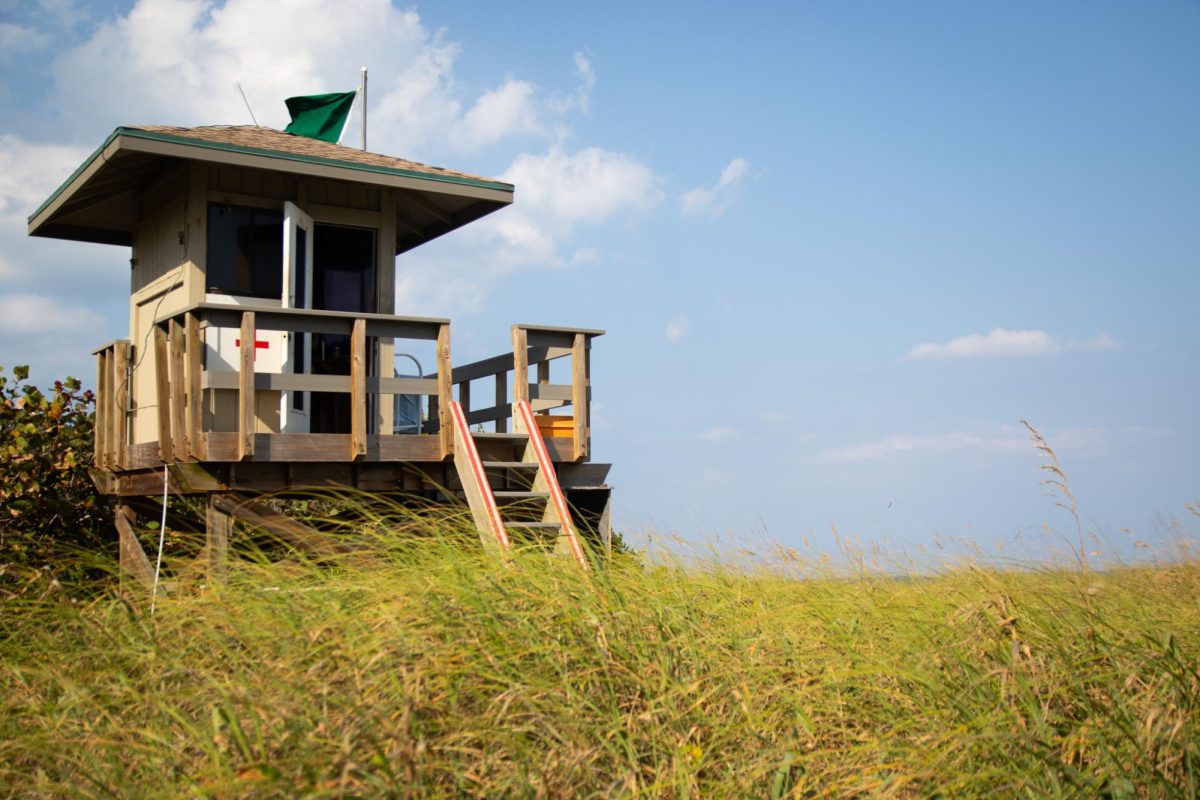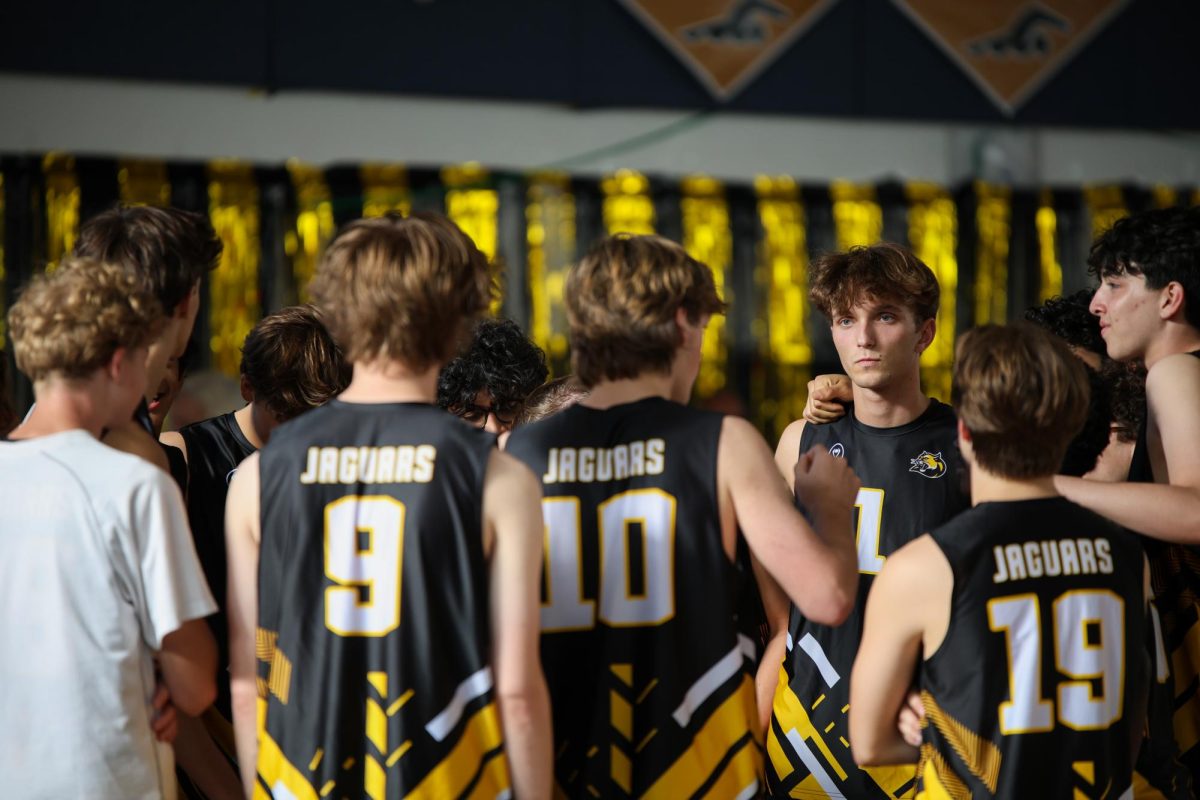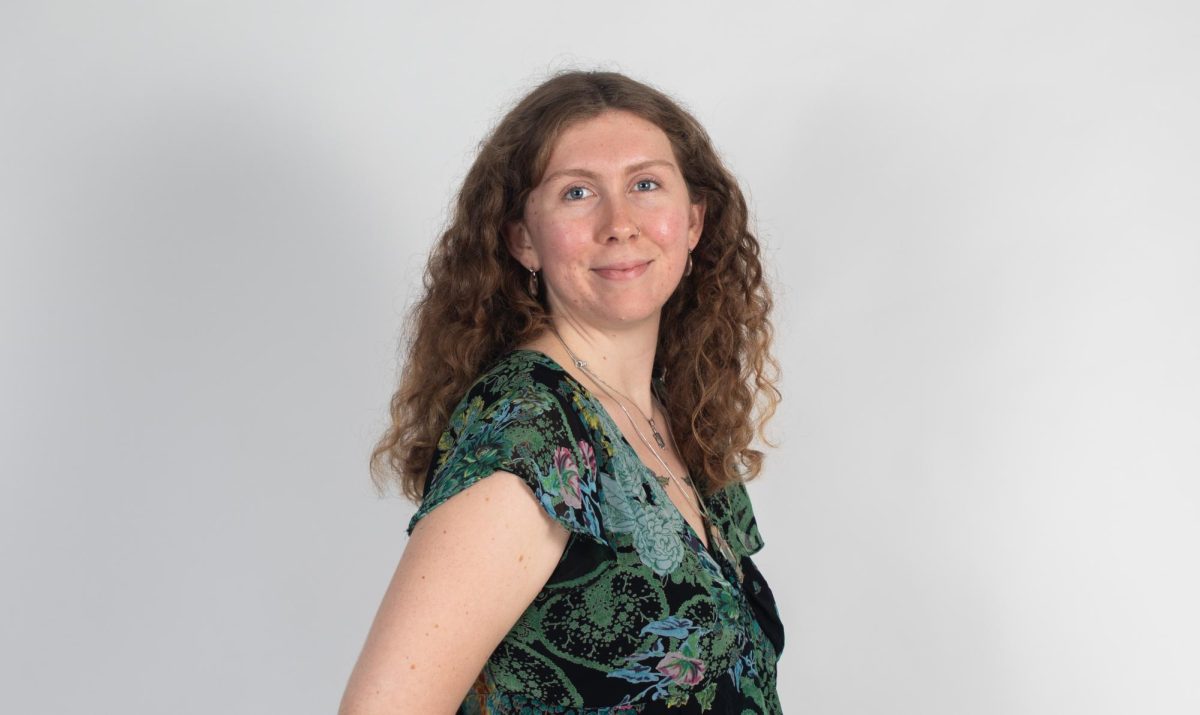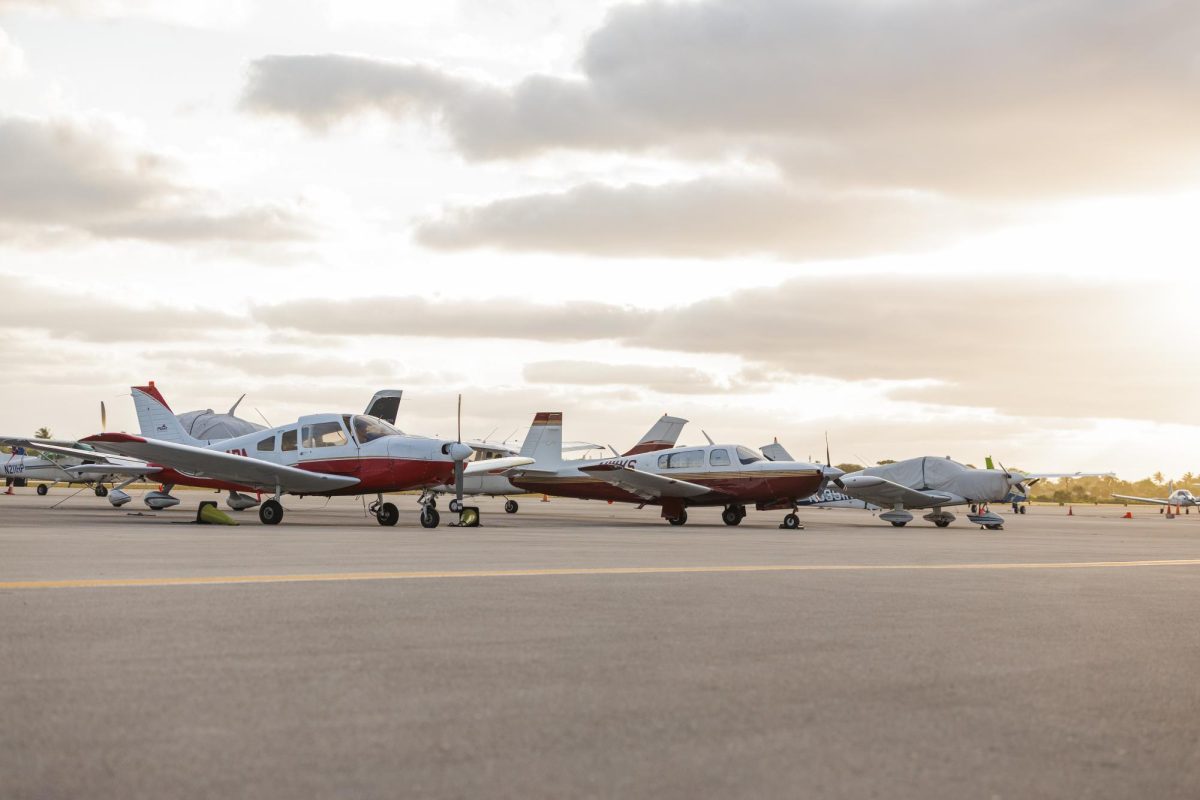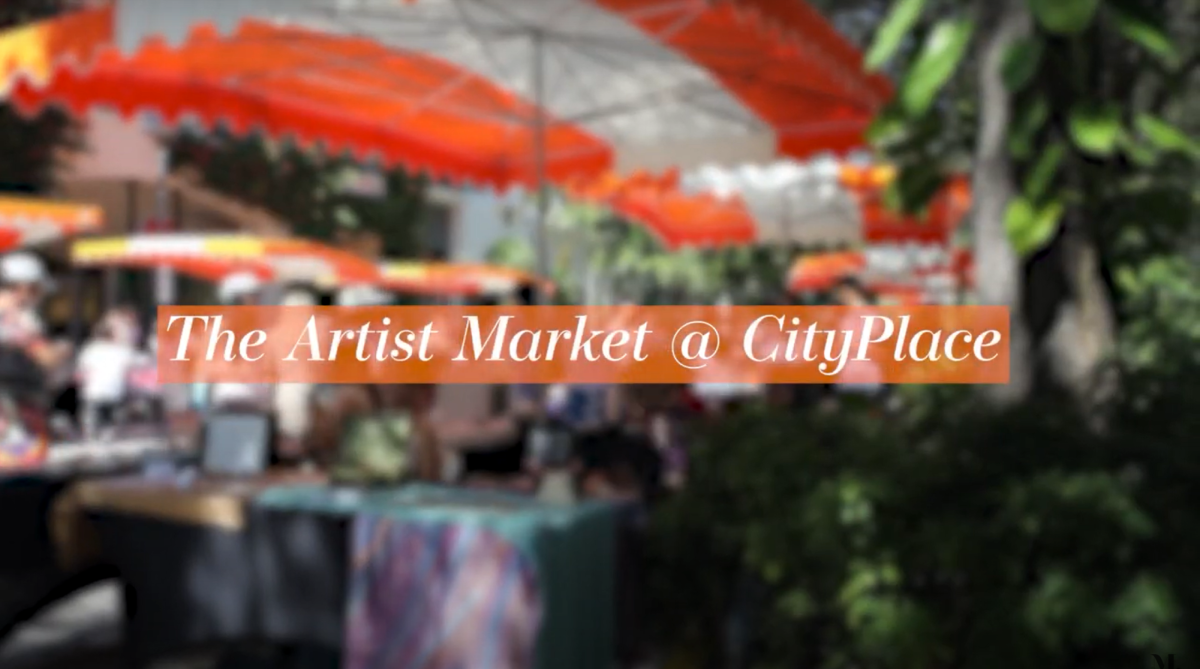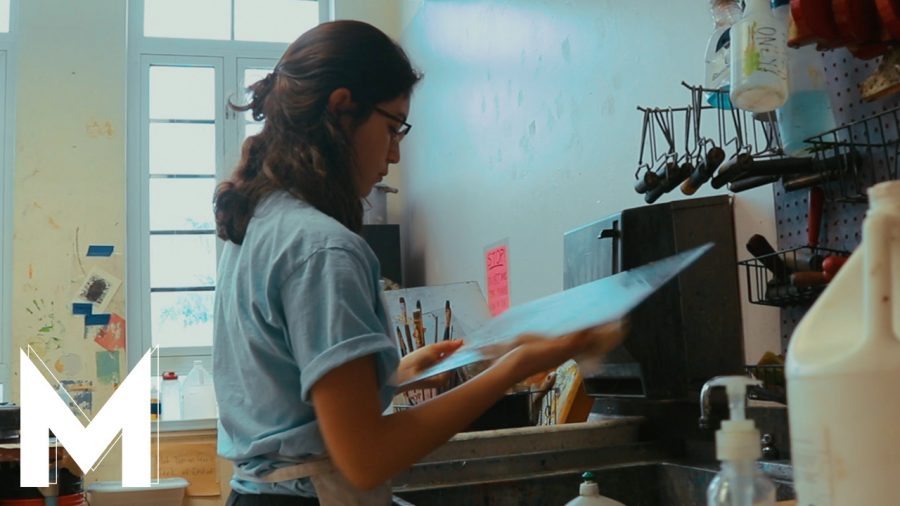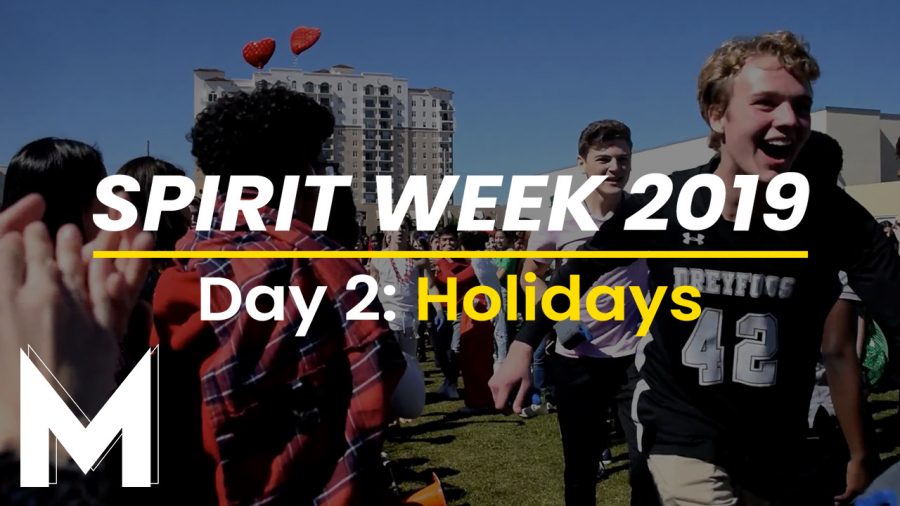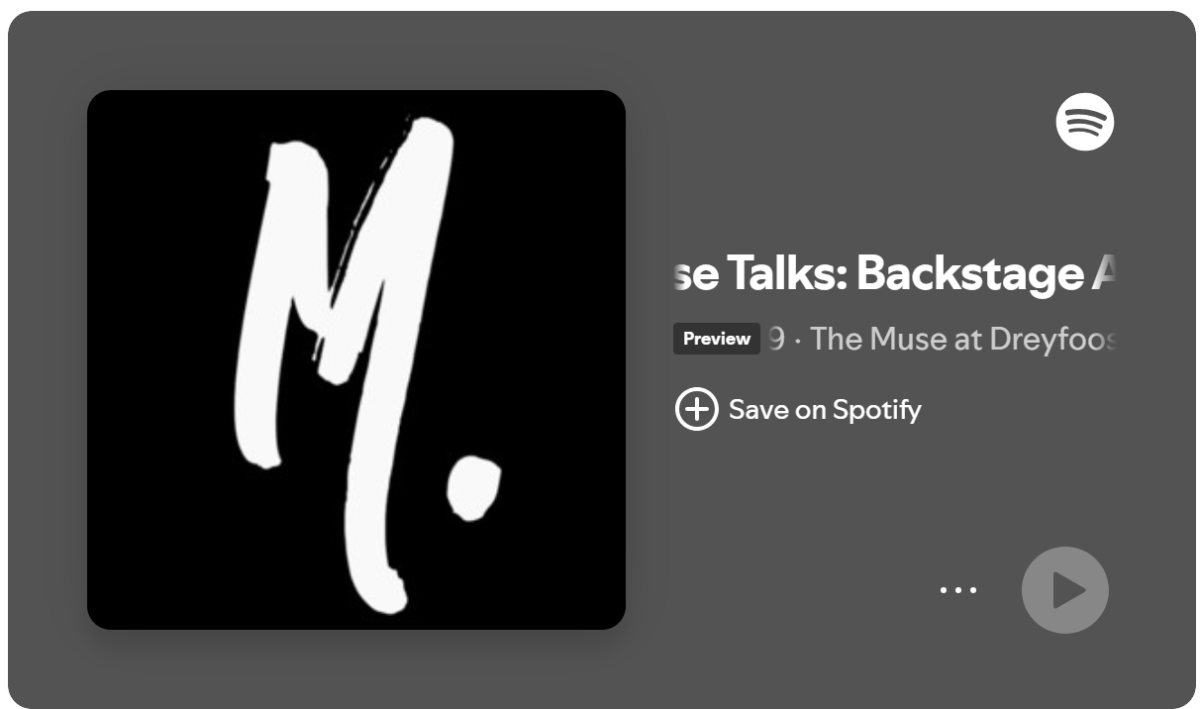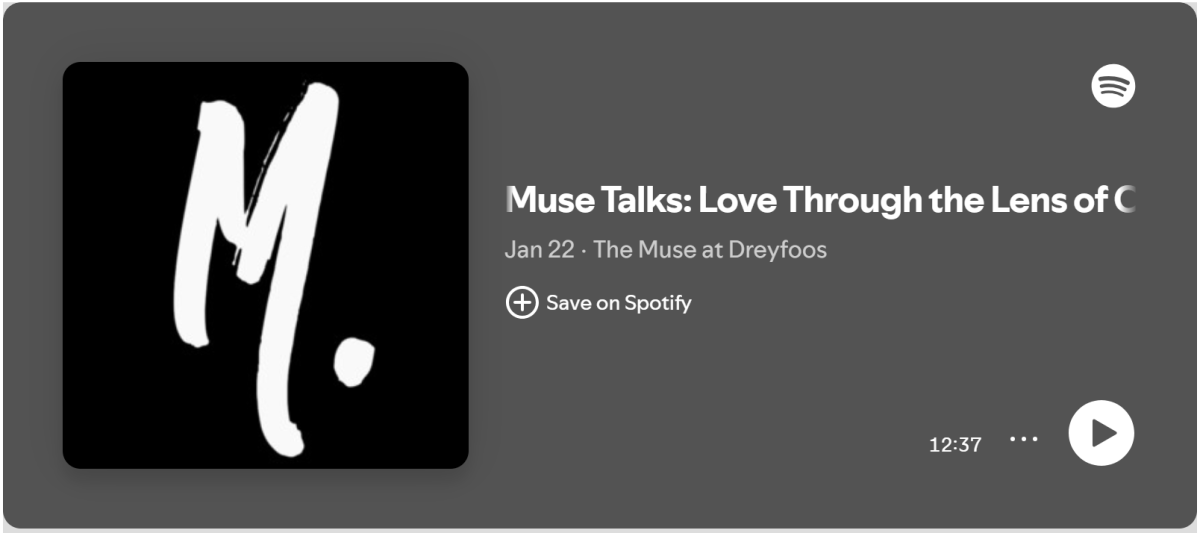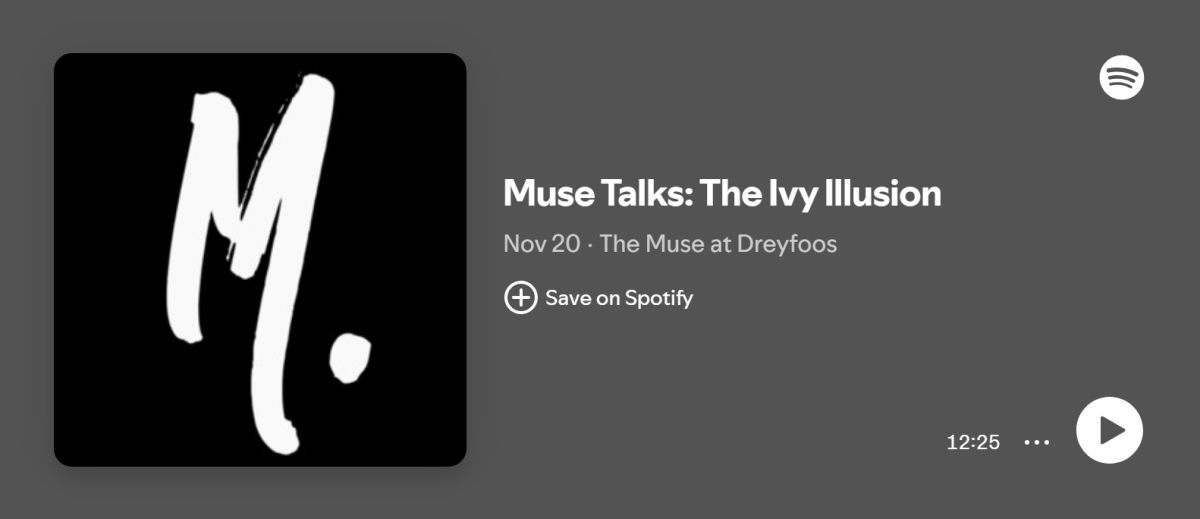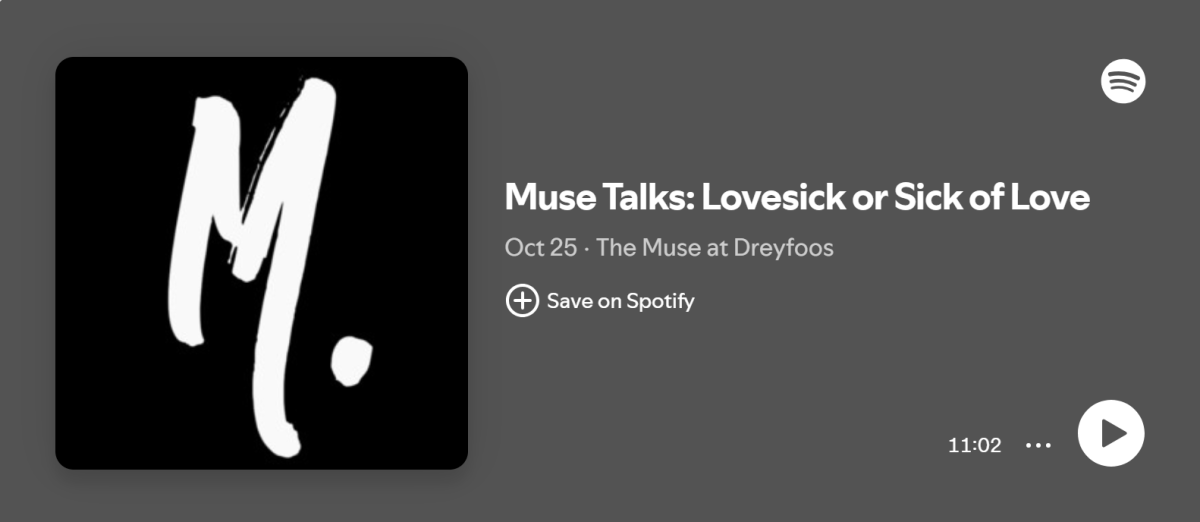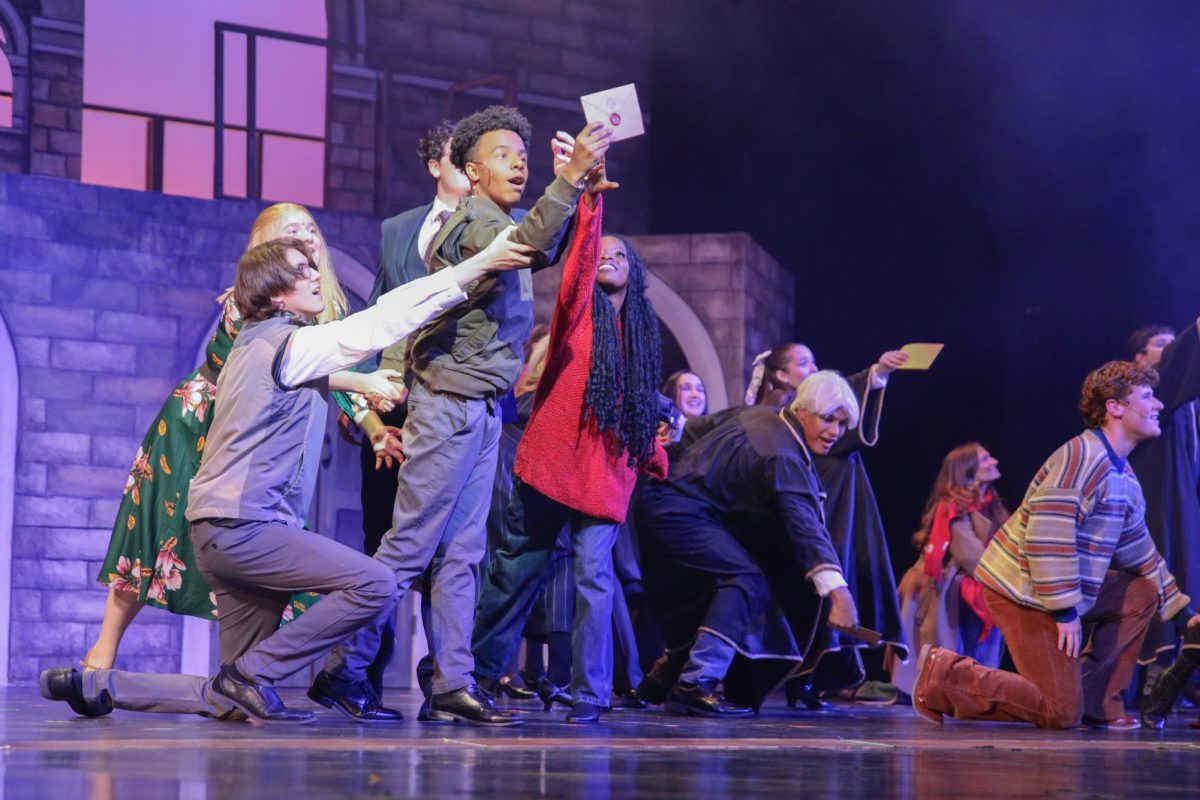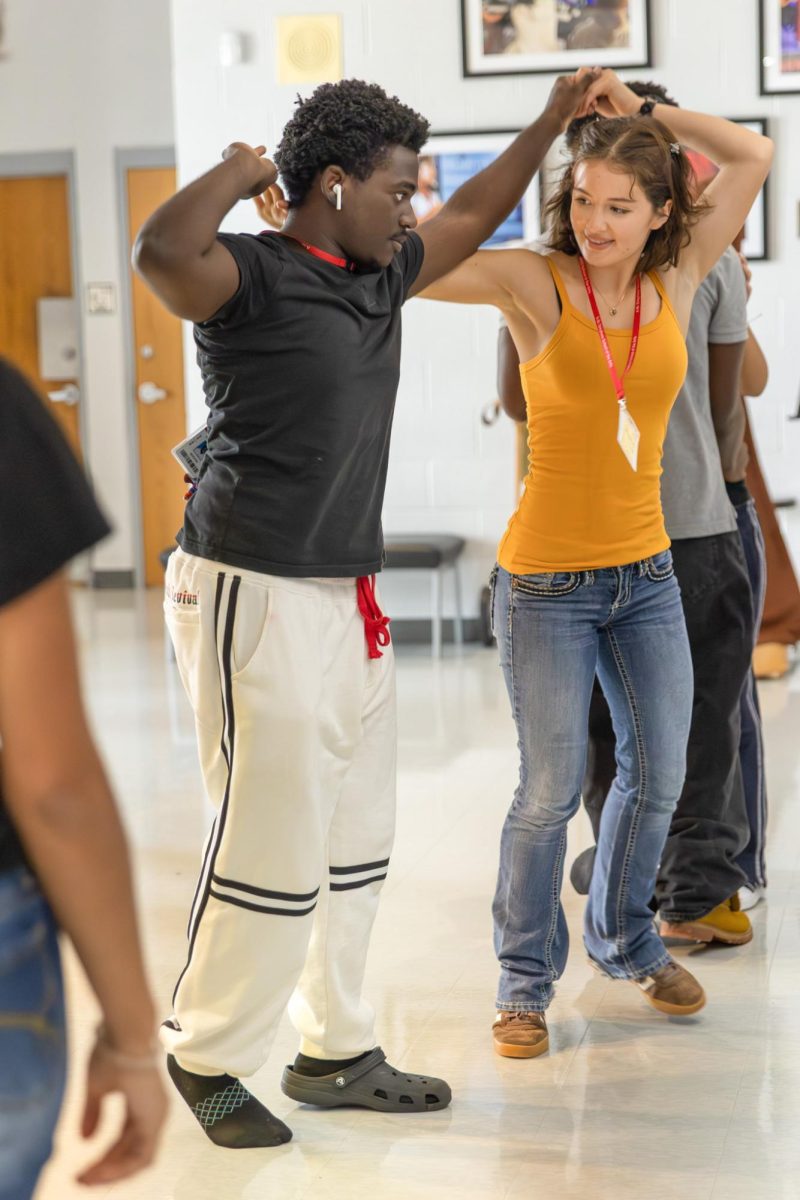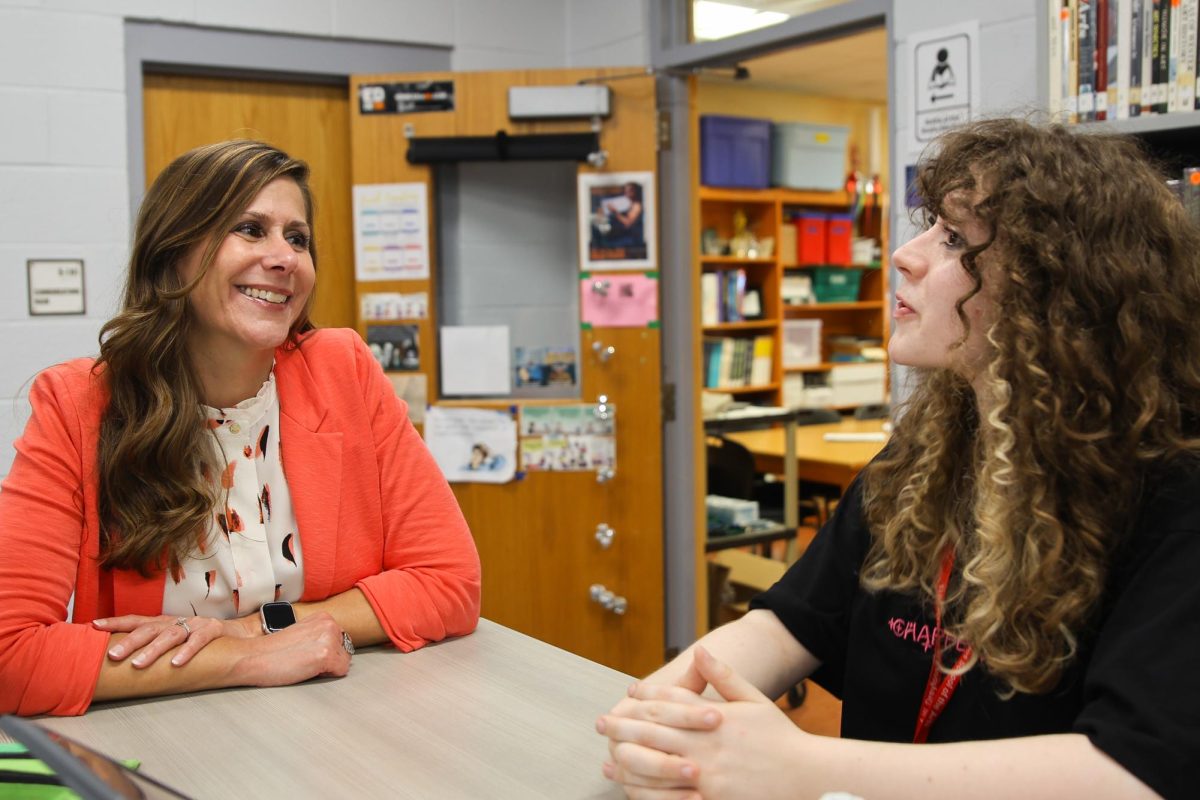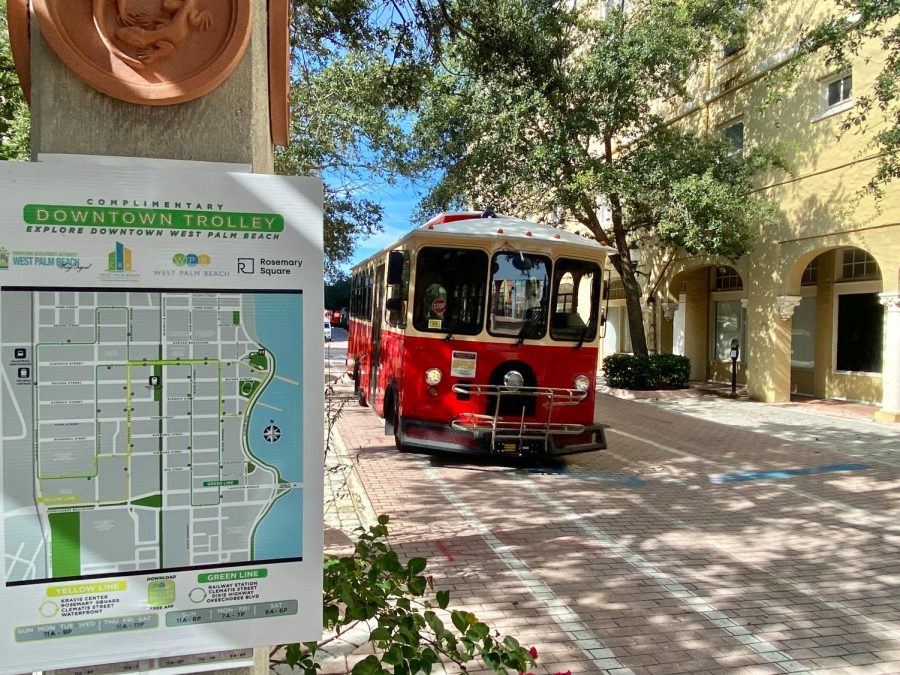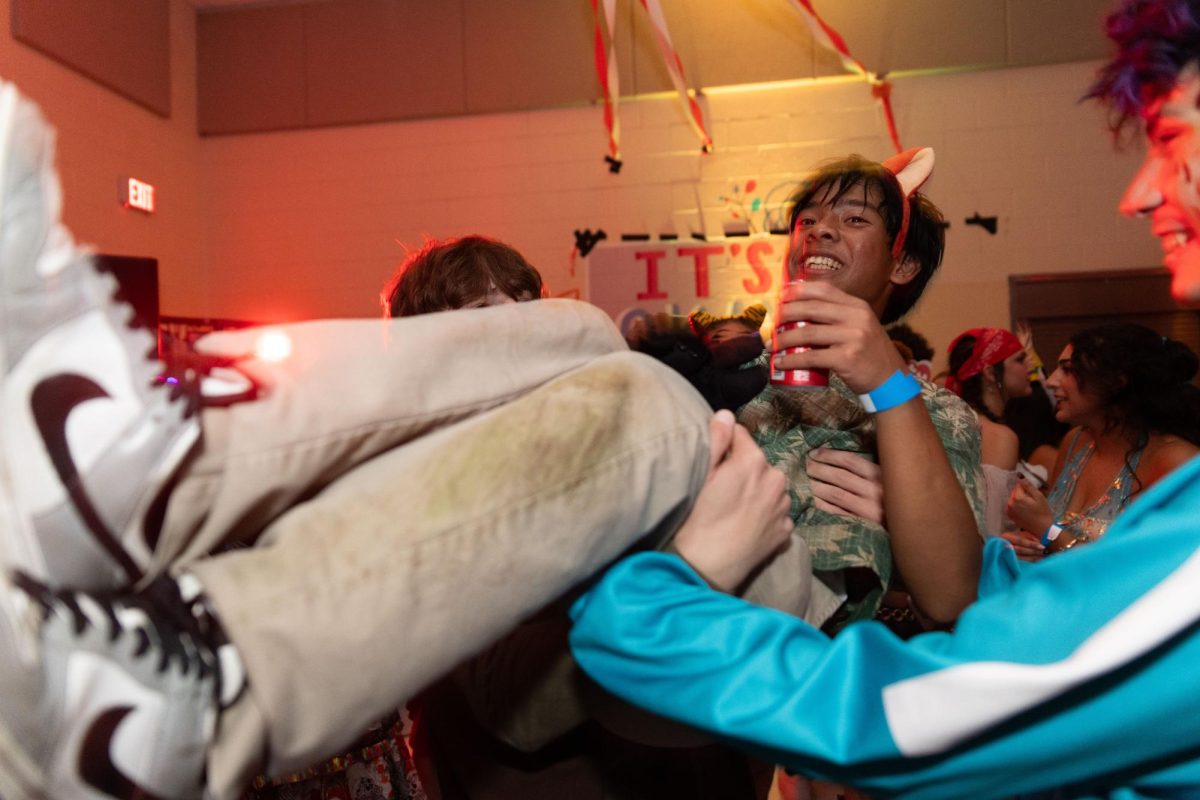Downtown Drives
A personal account of downtown West Palm Beach’s affordable transportation that offers students both safe and scenic rides all around the city.
Slowly coming to a stop, the Yellow Line trolley arrives at its 200 Rosemary Ave. stop. The trolley runs from 11 a.m. to 9 p.m. from Sunday through Wednesday and 11 a.m. to 11 p.m. from Thursday through Saturday.
September 13, 2022
I grew up hearing the nursery rhyme, “The wheels on the bus go round and round.” However, the bus needs to make some room for the other vehicles in town, in this case, trolleys and electric shuttles zipping around downtown West Palm Beach.
I arrived at the trolley station in the heart of The Square, located directly outside of the H&M, at 4:00. I quickly located a sign detailing the three possible routes each with multiple trolleys: the long distance Blue Line, which travels through the Historic Northwood Village; the shorter and transport focused Green Line, which services the Tri-Rail and Brightline stations; and the scenic Yellow Line, which has stops at the Waterfront, Clematis Street, Kravis Center, and The Square.
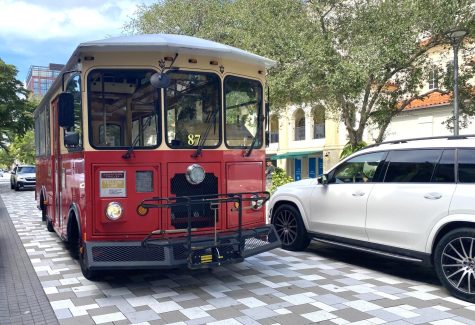
Using the Trolley Tracker app, I was able to see all the stops on each route, the closest one to campus being on the corner of Sapodilla Avenue and Iris Street. The app also displayed the live locations of the trolleys, which is surprisingly accurate when the app is functioning. (I recommend downloading the app in advance to avoid ending up like me with a Starbucks Frappuccino melting in my hand and my trolley two minutes away.)
The trolleys, owned by the city of West Palm Beach and operated by independent contractor Molly’s Trolleys, showed up in the downtown area in 1998, after the company’s success in other areas. Owned by husband-wife duo Molly Stahlman and Bob Spagnol, Molly’s Trolleys has grown from two trolleys at the time of founding to 11 currently operating around the city.
As the trolley scooted toward me, the deep red and tan colored vessel was reminiscent of a holiday-themed mall choo-choo train, minus the rails. Nearing the stop, the large vehicle swiftly shifted into the small cutout designated for loading cars, opened its doors with a ding, and let my fellow passengers, a family of four, and myself in.
Once inside, I was blasted with the catchy ending of ABBA’s “Dancing Queen” from the speakers. The inside looked different from any mode of public transportation I had seen before: it was clean, lacked sticky surfaces, and was decorated reminiscent of the 1950s. The sand-colored wooden benches and seats were scaffolded by red iron supports matching the trolley’s exterior. (This really drove the “Little House on the Prairie” vibe straight home). In the front, our driver sat in a cockpit of sorts with screens and dials surrounding her elevated chair, the only modern part of the vehicle.
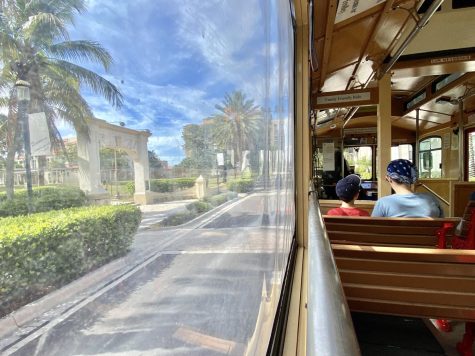
Now, while these whimsical bus-like vehicles moving around the city complex may seem like gas guzzlers, they are actually quite energy efficient. Since 2011, the trolleys have run fully on propane, making them quieter and leaving a substantially smaller carbon footprint compared to gasoline. In fact, researchers from the Environmental Defense Fund are even proposing propane as the future replacement for standard fossil fuels in vehicles, given a shift to propane would be much faster than full electric reliance.
As the trolley pulled out of The Square, the first issue became apparent. A lack of sticky substances was replaced by a vast amount of slippery surfaces, namely the seats. In a wide-turning vehicle such as a trolley, sliding is often inevitable. No more than five times was I caught unaware at a turn and felt myself losing the battle to momentum.
Despite the twists and turns, the ride itself was overall very pleasant, and in my experience, safe. Throughout the cabin, I spotted three signs advertising family friendly rides. The trolley typically takes main roads, and given that the windows are merely rollable plastic screens, visibility is high for both those inside and out, further ensuring safety for all onboard. There are also a series of pull handles attached to a wire that alerts the driver when it’s time to get off.
When my ride was over, I was already looking back at the experience fondly. Whether it’s getting to Clematis quickly after school, taking in a show at the Meyer Amphitheater, or simply clearing one’s mind, the trolley is one of the best ways to go.
Just make sure to hold on for dear life.
For the second leg of my journey, and with my caffeine levels dwindling, I downloaded the app for Circuit. The app was exactly what I needed: simple. All I had to do was make an account, and I was in. Within one minute, I had ordered my first ride, and my driver Patrick, was on his way. The greatest surprise was the bill: zero dollars, zero cents.
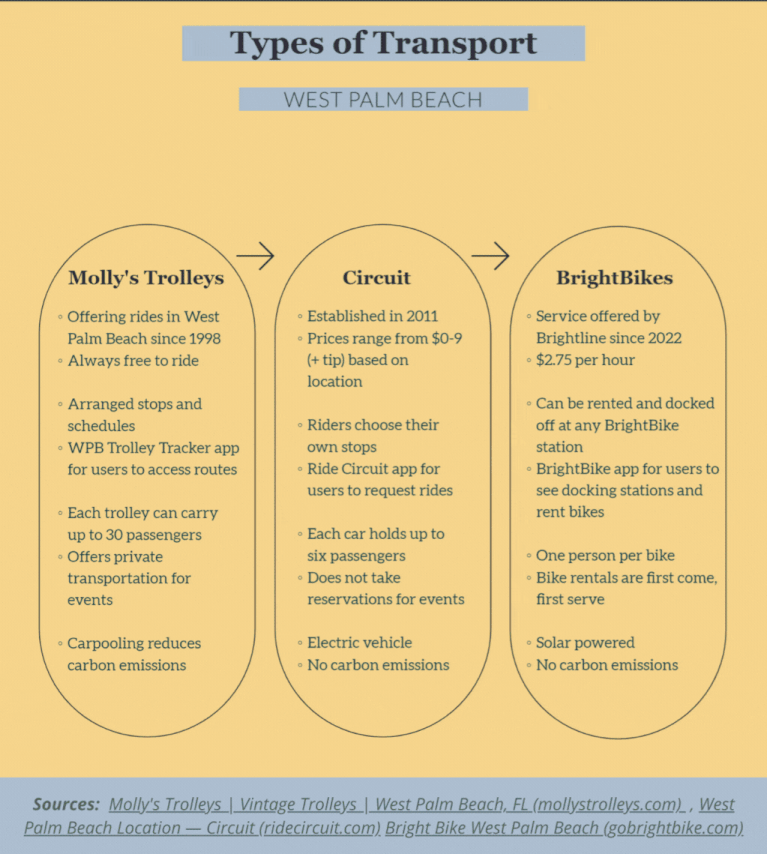
Unlike Molly’s Trolleys, Circuit, the Uber-like electric shuttle company that has spread rapidly in the area, has less of an established history. Circuit was founded in 2011 by friends James Mirras and Alex Esposito with a mission statement of reducing congestion while remaining eco-friendly, which they aim to accomplish with their fleet of enclosed 6-seater fully-electric shuttles.
While waiting, I quickly discovered two key flaws of the Circuit system. First, a lack of shuttles made the wait time more than ten minutes on both rides I took. Second, the app’s time tracker was not very accurate, with time frames largely subject to change. But, despite the time, Patrick arrived in style.
Circuit’s electric shuttles are nothing if not futuristic. I looked up the hill to see Patrick heading towards me, a setting sun behind him like a cowboy at the end of a western movie. The electric shuttles are partially enclosed with doors, a roof, and open windows. After struggling with the doors for a minute, much to the apparent disliking of Patrick, I eventually got in and began asking him questions about his job.
In our conversation, Patrick talked about how he had been driving for Circuit for around six years in the West Palm Beach area, making him a veteran in the game. When asked about the average Circuit passenger, he stated that the majority were students, but that they mostly just went for “joyrides” due to the no-to-low price of the service.
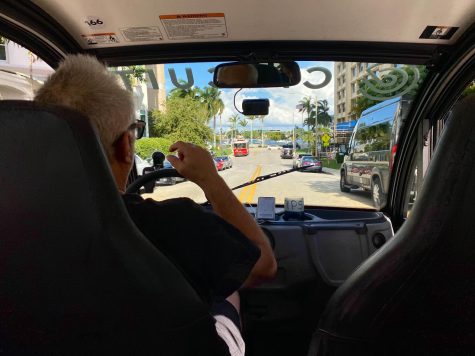
Patrick explained that drivers do make an hourly minimum wage for their time, but rely on tips for the majority of their income. While he understands most kids either don’t have money to pay for those services or carry cash, he said that even the smallest amount is greatly appreciated. Being that the minimum wage in Florida is $10 an hour, I recommend tipping at least 1-2 dollars for every 10 minutes of the ride.
When drivers are low, Circuit rides are often pooled, meaning that passengers may be joined by others along the route.
The ride itself was very pleasant, but, unlike the trolley, slow, given that the max speed in the Circuit is approximately 20 miles per hour. As I arrived at my stop, the waterfront across from Meyer Amphitheater, I thanked Patrick and hopped out, with only a slight bit of door trouble this time around.
It was when I arrived at my destination that I was thrown a curveball in the form of the yellow BrightBikes by Brightline. Similar to other city bikeshare systems, they operate out of “docks” around the area, where they are checked out and when done with a ride, returned at the closest dock, easily found on the app.
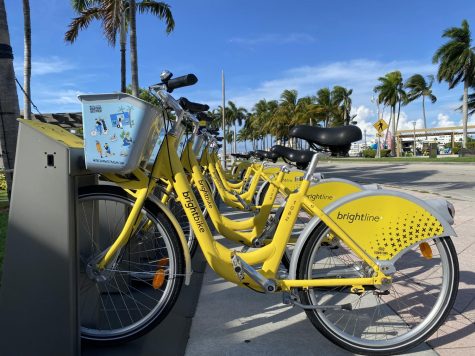
While BrightBikes are easily accessible, they also require a fee. Now, while the $2.75 an hour may not break the bank, it did make me take a step back and think about my other, better choices. To me, the thought process was simple: why ride a bicycle that I have to pay for when I can call free Circuit shuttles? Personally, I would not recommend the BrightBikes for students looking for easy transportation around West Palm Beach.
After realizing that my pockets were maybe a little bit too light for a BrightBike ride, I called a Circuit to end my day of transportation and Steve G was my chatty chauffeur.
Steve G gave a different point-of-view on the life of a Circuit driver. Unlike Patrick who was a bit more reserved, Steve was bursting with energy and was a newbie to Circuit as he had only been driving for 6 months. Steve described the job as both “something new” and as a way to “work while having fun.”
After a day on wheels, I was glad to be back on my feet, but I was certainly looking at travel in the Downtown area differently.
The transportation services around our school provide safe, clean, and quick rides while also giving riders access to the culture of the city on the way.
To me, that sounds like a wheely good deal.

